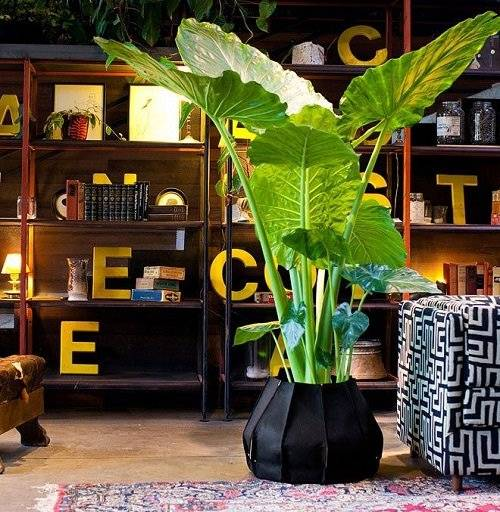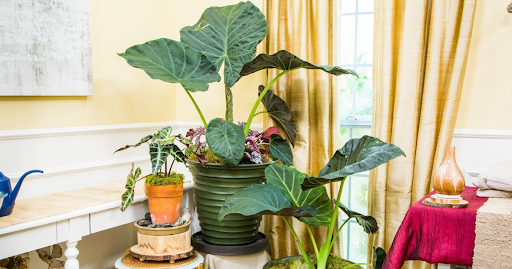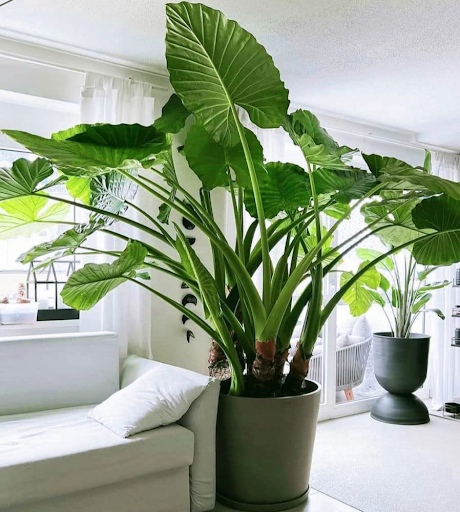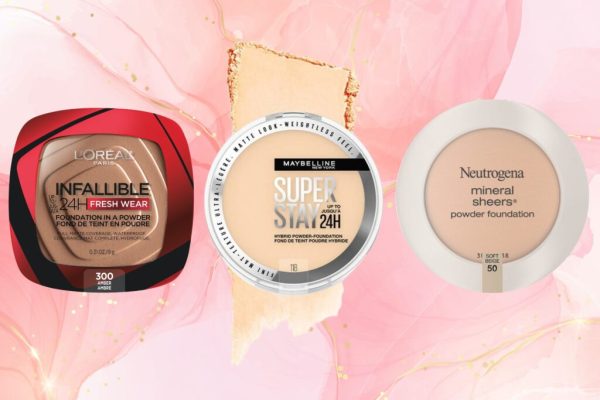Elephant ears grow in tropical regions. These are perennial plants, as they can thrive through a few seasons. The plant is known more for its extravagant leaves than its blooms. Its enormous leaves are undoubtedly one of its most distinguishing features. People love to decorate their homes with indoor elephant ear plants because of the unique shape of the leaves in the form of a heart. There are numerous varieties of these plants in the wilds of Asian and Southeast Asian countries.
Is it possible to keep Elephant Ears in the house? These days, indoor elephant plants are frequently seen in many households and green landscapes in commercial areas. It gives the interior areas an air of exoticism and magnificence, which is rather pleasing to the eye. Elephant ear plants develop well even in small spaces. It is the way to go if you’re looking for a spectacular addition to your home’s interiors. Its attractive foliage and low maintenance requirements are significant reasons why homeowners are including the plant in their properties. In this post, we’ll go over the best practices for caring for an indoor elephant ear plant as well as the advantages of owning one.
Table of Contents
Effective Ways to maintain indoor elephant ear plants
Elephant ears provide a dramatic splash of diversity and a striking texture to any landscape or pot. They are easy to cultivate. They need wet, nutrient-dense soil and some shade. These indoor plants grow fast and get to their massive size once their tubers get treated with care and patience.
1. An appropriate amount of sunlight
These plants do well in full sun or partial shade. All you have to do is ensure the plant gets enough natural light. They develop well when the sunlight falls on them directly. It’s good to put the plant in a place where direct sunlight is available during the early hours of the day or before dawn. Pick a spot that provides the sun’s rays to this indoor house plant for hours. Find a place in the garden where the strong sunlight gets filtered through a screen of curtains, a net, or shades. If your living space is tiny, you can put the plant near the window in the eastern direction. When plants get exposed to strong sunlight, the leaves might fade and become yellowish or brown. You must ensure the leaves do not lose their green.
2. Nutrient-Rich Soil
Such indoor plants grow well in well-drained soil that retains just a little moisture. You must ensure that the layers of soil are not soggy and filled with water. There is no need to buy any specific type of soil to plant this indoor greenery. The soil should not be too dense. To make the soil airy, mix the soil with wooden shreds and tiny pebbles. The pot you are choosing to plant the Elephant ear in must have adequate holes. It is to maintain proper drainage of the water and prevent the soil from becoming soggy. You might consider putting extra into the pot’s foundation. Putting a thin layer of stones on the bottom while planting may also help drainage. It is significant for getting the extra water out of the soil.

3. Repotting the Plant
It is not a plant that requires replanting every few months. When grown indoors, the Elephant Ear plant thrives when its roots are constricted by the confines of its container. You get to know as soon as it outgrows its containers. Check the pot for any cracks if you see your indoor plant getting large. If you see one, get a larger pot for repotting. Spring is the finest season for repotting. The plant is only now emerging from its winter hibernation. It’s ready to burst out with abundant fresh growth. Re-pot with soil formulated for houseplants. If you feel like you need more drainage, add some organic material.
4. Spaying and Watering
Maintaining proper growth for your indoor elephant ear plant becomes essential during the spring months. It is when the plant flourishes to its full size. It loves to thrive in a consistent environment. The amount of moisture should be adequately maintained throughout the plant’s growing season. Your plant will rot and die due to the excessive moisture content in the potted soil. However, this does not mean that you remove all the wetness from the soil. The root of the elephant ear plant must not dry out due to a lack of moisture. The lower layers of the soil have to be humid. Keep spaying a small amount of water throughout the day, but not too much.
5. Maintain an appropriate environment
If the air is too dry around the plant, it will not be able to grow appropriately. Also, the cooler the temperature gets, the stiffer the roots of the plants start to become. Hence, the Elephant ear plants struggle hard to cope with extreme weather conditions. These are the two most common problems with this heart-shaped plant. Because of their tropical origins, elephant plants thrive in hot, humid climates. These conditions could be tricky to maintain in the comfort of our own homes. A plant thrives in conditions of moderate moisture. On dry days, it is ideal to give constant dampness to the soil by spraying throughout the day. Being regular in providing moistness helps the plant develop its full potential in indoor environments. Now, let’s discuss the next essential factor you must know to maintain proper indoor elephant ear plant growth. You must ensure that the conditions in the surroundings are sustained towards a warm spectrum. A moderate setting is required for nourishing your indoor elephant plant. Simply put, if the weather is too cold, you must make adequate arrangements to get the temperature of the room raised to 17°C or more. In the chilling winter months, the plant stops growing and becomes dormant. It is something you need to do regularly.

6. Fertilizer and additional feeds
The months of spring are a pleasing time when your indoor elephant ear plant blooms into a beautiful and mature green decoration. The plant springs back into life and starts to develop with proper nourishment. You can add fertilizer to the soil to maintain steady growth. Go for fertilizer that is in liquid form. It seeps well into the pores of the soil and gets to the bottom of the tuber roots. Mix the feed with extra water to dilute its strength to half of what the elephant plant requires. When the fall months are about to come, it’s time to mix more feed into the soil. It is the final time that you will prepare your plant to stand all through the rough winter months. Doing so gives the indoor elephant ear plant a little time to rest and prepare for the harsh weather. If you want your plant to grow bigger and spread its reach beyond the periphery of the small pot, a regular and steady supply of nutrients is essential all year. The fertilizer must be mixed with the soil in small quantities to let the plant grow quickly. The spring is a popular time for planting this fast-growing greenery. It is the time of year when all the possibilities of frost and cold have passed. The soil will be about 22°C warmer. It will take the indoor plant two months to grow to its full height.
Final words
The elephant ear plant is ideal if you love adding green elements to your home décor. Many people are going for this beautiful plant because of its unique features. With all the practical ways mentioned in this article, it will be easy to grow this plant in your home or garden. All the methods you need to follow to maintain the healthy growth of your indoor plant are easy to do and take no effort. All you need to do is provide care and proper nourishment for the indoor elephant ear plant. The spectacular beauty of this species compels plant lovers to add it to their home décor. Elephant ear plants simply need attention and love.
Arpita Das Gupta hails from the City of Taj Mahal, Agra; decided to become a full-time writer after quitting her job at a multinational organisation to pursue her dream. For the last six years, she has written on many aspects of modern life. Has a passion for writing about wellness, nutrition, culinary cultures, and everything in between. Also attended Integral University in Lucknow, where she earned a Bachelor of Technology degree in Electronics and Communications. Reading, traveling, trying out new recipes, and spending time with her kid are some of the favorite things to do.





